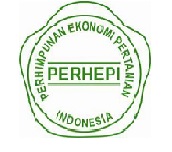Pipanisasi Irigasi Dengan Pemanfaatan Energi Non Fosil Pada Lahan Garapan KTH Wonosewu, Mojogedang, Karanganyar
Abstract
Keywords
Full Text:
PDF (Bahasa Indonesia)References
Affandi, Z., Purnomo, D., & Supriyono, S. (2019). A Study of Light Intensity and Fertilizer on Soybean in Albizia chinensis Agroforestry System. SAINS TANAH - Journal of Soil Science and Agroclimatology. https://doi.org/10.20961/stjssa.v16i1.25872
Anonim. (2023). Sistem Transmisi.
Asid, N. J. (2020). Evaluasi Kondisi Pipa Pada Sistem Irigasi Perpipaan. Narotama Jurnal Teknik Sipil, 4(2), 1–10. https://doi.org/10.31090/njts.v4i2.1258
Badan Pusat Statistik. (2022). Berita Resmi Statistik. Bps.Go.Id.
Diana Sari, I., Yuniar, Y., Siahaan, S., & Al, E. (2015). Community tradition in planting and using medicinal plant in surround home yard. Indonesian Pharmaceutical Journal, 5(2), 123–132.
Fajar, A., Purwanto, M. Y. J., & Tarigan, S. D. (2016). Efisiensi Sistem Irigasi Pipa untuk Mengidentifikasi Tingkat Kelayakan Pemberian Air dalam Pengelolaan Air Irigasi EFFICIENCY OF PIPE IRRIGATION SYSTEM TO IDENTIFY THE FEASIBILITY. Jurnal Irigasi, 11(1), 33–42.
Gunawan, H., & Afriyanti, D. (2019). Potensi Perhutanan Sosial dalam Meningkatkan Partisipasi Masyarakat dalam Restorasi Gambut. Jurnal Ilmu Kehutanan. https://doi.org/10.22146/jik.52442
I Dewa Gede Jaya Negara, Humairo Saidah, I Wayan Yasa, & Adhitya Halim .P. (2021). Keseragaman Dan Pancaran Irigasi Pipa Perforasi Pada Berbagai Kemiringan Pipa Transmisi. PADURAKSA: Jurnal Teknik Sipil Universitas Warmadewa, 10(1), 142–157. https://doi.org/10.22225/pd.10.1.2513.142-157
Kementan. (2023). Indonesia Buka Peluang Ekspor Alpukat Ke Jepang. Kementerian Pertanian RI.
Kementerian Lingkungan Hidup dan Kehutanan. (2018). Peraturan Menteri Lingkungan Hidup dan Kehutanan Nomor P.15/MENLHK/SETJEN/KUM.1/5/2018 tentang Kawasan Hutan dengan Tujuan Khusus. Peraturan Perundangan.
Kumar, S., Baniwal, P., Kaur, J., & Kumar, H. (2020). Antioxidants in Fruits: Properties and Health Benefits. In Antioxidants in Fruits: Properties and Health Benefits. https://doi.org/10.1007/978-981-15-7285-2_18
Kustiawan, K., & Sofi, K. (2017). Partisipasi Masyarakat Dalam Pembangunan di Desa Kuala Sempang Kecamatan Seri Kuala Lobam Kabupaten Bintan Tahun 2014. Jurnal Trias Politika, 1(2), 98–118. https://doi.org/10.33373/jtp.v1i2.1066
Ruijter, J., & Agus, F. (2004). Sistem Agroforestri. World Agroforestry Centre.
Rumaherang, E., Wattimena, W., Rawulun, S., & Noya, E. (2023). STUDI REGIM ALIRAN FLUIDA DAN PENENTUAN HEAD LOSS AKIBAT GESEKAN PADA INSTALASI PERPIPAAN. ALE Proceeding, 6, 154–161. https://doi.org/10.30598/ale.6.2023.154-161
Sumanto, S. E. (2009). Kebijakan pengembangan perhutanan sosial dalam perspektif resolusi konflik. Jurnal Analisis Kebijakan Kehutanan.
Wijayanti, R., Baiquni, M., & Harini, R. (2016). Strategi Penghidupan Berkelanjutan Masyarakat Berbasis Aset di Sub DAS Pusur, DAS Bengawan Solo. Jurnal Wilayah Dan Lingkungan, 4(2), 133. https://doi.org/10.14710/jwl.4.2.133-152
Yanuar Purwanto, M. J., Teknik Sipil dan Lingkungan, D., Teknologi Pertanian, F., Keahlian Teknik Pertanian, B., & Keahlian Sipil, B. (2023). Rancangan Outlet Irigasi Pipa pada Petak Sawah. Agricultural Engineering Innovation Journal, 1(01), 61–75.
DOI: https://doi.org/10.20961/prima.v8i1.102833
Refbacks
- There are currently no refbacks.
View My Stats

This work is licensed under a Creative Commons Attribution-ShareAlike 4.0 International License.


.jpg)



1.jpg)











